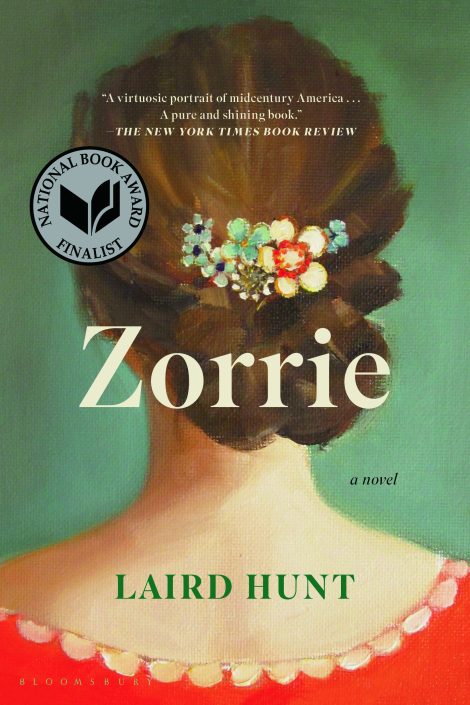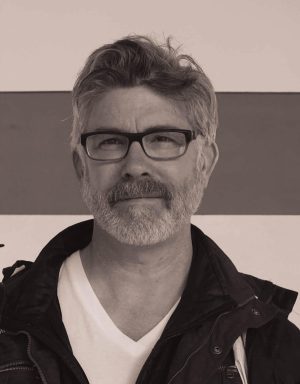
ZORRIE
Finalist for the 2021 National Book Award (Fiction)
From prize-winning, acclaimed author Laird Hunt, a poignant novel about a woman searching for her place in the world and finding it in the daily rhythms of life in rural Indiana.
“It was Indiana, it was the dirt she had bloomed up out of, it was who she was, what she felt, how she thought, what she knew.”
As a girl, Zorrie Underwood’s modest and hardscrabble home county was the only constant in her young life. After losing both her parents, Zorrie moved in with her aunt,
Finalist for the 2021 National Book Award (Fiction)
From prize-winning, acclaimed author Laird Hunt, a poignant novel about a woman searching for her place in the world and finding it in the daily rhythms of life in rural Indiana.
“It was Indiana, it was the dirt she had bloomed up out of, it was who she was, what she felt, how she thought, what she knew.”
As a girl, Zorrie Underwood’s modest and hardscrabble home county was the only constant in her young life. After losing both her parents, Zorrie moved in with her aunt, whose own death orphaned Zorrie all over again, casting her off into the perilous realities and sublime landscapes of rural, Depression-era Indiana. Drifting west, Zorrie survived on odd jobs, sleeping in barns and under the stars, before finding a position at a radium processing plant. At the end of each day, the girls at her factory glowed from the radioactive material.
But when Indiana calls Zorrie home, she finally finds the love and community that have eluded her in and around the small town of Hillisburg. And yet, even as she tries to build a new life, Zorrie discovers that her trials have only begun.
Spanning an entire lifetime, a life convulsed and transformed by the events of the 20th century, Laird Hunt’s extraordinary novel offers a profound and intimate portrait of the dreams that propel one tenacious woman onward and the losses that she cannot outrun. Set against a harsh, gorgeous, quintessentially American landscape, this is a deeply empathetic and poetic novel that belongs on a shelf with the classics of Willa Cather, Marilynne Robinson, and Elizabeth Strout.
- Bloomsbury Publishing
- Paperback
- November 2022
- 176 Pages
- 9781635578430
About Laird Hunt
 Laird Hunt is the author of eight novels, a collection of stories, and two book-length translations from the French. He has been a finalist for the PEN/Faulkner Award for Fiction and won the Anisfield-Wolf Award for Fiction, the Grand Prix de Littérature Américaine, and Italy’s Bridge prize. His reviews and essays have been published in the New York Times, the Washington Post, the Los Angeles Times, and many others. He teaches in the Department of Literary Arts at Brown University and lives in Providence.
Laird Hunt is the author of eight novels, a collection of stories, and two book-length translations from the French. He has been a finalist for the PEN/Faulkner Award for Fiction and won the Anisfield-Wolf Award for Fiction, the Grand Prix de Littérature Américaine, and Italy’s Bridge prize. His reviews and essays have been published in the New York Times, the Washington Post, the Los Angeles Times, and many others. He teaches in the Department of Literary Arts at Brown University and lives in Providence.
Praise
“A virtuosic portrait.” —The New York Times Book Review
“A tender, glowing novel.” —Anthony Doerr, Guardian, “Best Books of the Year”
“Pages that are polished like jewels.” —Scott Simon, NPR, “Books We Love”
“Lit from within.” —Mark Athitakis, Los Angeles Times, “Best Fiction Books of the Year”
“A touching, tightly woven story from an always impressive author.” —Kirkus Reviews(starred review), “Best Fiction of the Year”
“Radiates the heat of a beating heart.” —Vox
“A poignant, unforgettable novel.” —Hernan Diaz
Discussion Questions
1. Throughout the novel, fire is an important symbol. The epigraph of Chapter V reads: “Our hands touch, our bodies burst into fire” (113) and Zorrie remembers a line from a poem Noah shared with her: “My heart is the same as an upside-down flame” (157). Consider the important moments when fire plays a significant role in the lives of Zorrie, Noah, and Opal: the burning of the barn, Opal’s hospitalization, Harold’s death. In your opinion, what does fire symbolize to these characters? How does fire, literally and figuratively bring these characters closer together or further apart?
2. Discuss the symbolic significance of Luna powder. Zorrie and her friends celebrate the magical substance, not knowing its harmful effects; they eat it by the spoonful, and cover their bodies with its glow. When Zorrie’s friends develop health complications, she wonders whether the powder affected her pregnancy. Even further, she fears that it may be to blame for all of the suffering in her life; she thinks “Had it reached back in time, taken [my] parents, and replaced them with [my] aunt?” (92). How does the powder weave itself through Zorrie’s life? What does it symbolize? What does it mean that something so whimsical and beautiful can be so destructive?
3. In the hospital, Opal’s parting words for Zorrie are as follows: “It’s a cave all your own, Zorrie Underwood. Whether you glow in it or you don’t. It’s a cave behind your face. It’s yours. It belongs to you” (102). Later, Zorrie is drawn to images of darkness, caverns, and depths. How do Opal’s words impact Zorrie? What does Opal help her to understand? What are your impressions of this quote and how it reflects on the novel’s meaning?
4. Though we only meet her once, Opal is a foundational character. Consider the scene in which Zorrie visits her. What stood out to you? Was Opal portrayed the way you had expected? Discuss how the impact of Opal’s mental illness reverberates through their small community. What does Opal’s circumstance reveal about the way that we, as a society, have historically handled the mentally ill? Do you believe that Opal is better off in a hospital or with her family? Why?
5. Discuss the power of companionship. When Noah attempts to be hospitalized, Hank asks Zorrie to reach out. He says, “… the way I see it, our friend down the road is about out of angels, Zorrie. He needs people who care about him more than a handshake on Sunday” (123). As they routinely eat together, Noah begins to open up and, maybe, to heal. In times of struggle, who has shown up to support you? What did their support look like?
6. Over the course of her life, Zorrie experiences tremendous grief; the loss of her parents, her unborn child, her husband, and her dear friends. Explore the different ways in which the novel’s characters express their grief. What does healing look like for Zorrie and others? What is the difference between coping and healing? Are there some losses from which one cannot recover?
7. Zorrie struggles to define the importance of religion. When she asks Noah about his thoughts on God, he responds: “He thought that there was plenty out there, and allowed that maybe some of it was even eternal, but he wasn’t sure any of it needed a name and so many little houses built on its behalf in the countryside out of wood and stone” (131). For Noah, it is a disservice to the concept of faith to confine its power to religion. Is religious faith the only kind? Where are we most faithful? Where do you find faith in your life?
8. Virgil, as a character, serves as a beacon of education, inspiration, and poetry. He teaches: “Life … was a good deal about discouragement and fear, and the soul, which was the true heart of humankind whether you looked at it Christian or otherwise, needed a good deal of comforting some way or other if it was expected to soldier on” (133). According to Virgil, how do we build resilience in our lives? How do our relationships form the basis of our survival?
9. Throughout her life, Zorrie grounds herself in the familiarity and solidity of the seasons and the soil. In addition, Zorrie’s life takes place during an era of American history in which women were not traditionally treated as protagonists. Discuss the effect of the novel’s setting. How does Hunt use the setting to both advance and enhance Zorrie’s story? What are the qualities of this time period that are unique, and how do they influence Zorrie’s life?
10. On the plane home from Amsterdam, Zorrie meets Ellie Storms and begins to share her life story. Hunt writes, “Everything she spoke of seemed informed by beauty. Death had nothing to do with it. Not even for those who were dead. Life was everything” (155). As she reflects on her life, Zorrie is able to see the beauty that is inherent in every moment of pain and joy. Discuss how Zorrie reaches this point of understanding. What qualities and tools does she use to form this perspective? Or is it just the natural effect of time? Where in your life do you see beauty and suffering coincide?
11. Compare and contrast the novel’s two main relationships: Noah and Opal and Zorrie and Harold. Both couples endure tremendous loss and suffering. And yet, each is able (in Zorrie’s case, arguably, even after the death of Harold) to maintain a loving connection over time and distance. Discuss how these relationships illustrate the balance between love and loss. How do Noah and Zorrie move on, if ever? How do we carry our love for others throughout our lives?
12. Explore the book’s trajectory. How does Zorrie change over the course of her life? At the end, how does Zorrie reflect on her life? What does she consider most important? As a reader, what is the impact of following one character from childhood to the end of their life?
13. Since she first saw him, Zorrie and Noah have been inextricably connected. Discuss their complex relationship. What universal forces pull them together and keep them apart? How do they show each other that they care? What was your reaction to Noah refusing Zorrie’s final romantic gesture? What does this particular relationship teach us about the nature of love and friendship?
14. Consider the epigraphs that begin each chapter. Individually, the epigraphs are a harbinger of what each chapter holds. Combined, they form an elegant poem. What is the significance of using this structure to tell Zorrie’s story? Were there epigraphs that stood out to you, and why?
